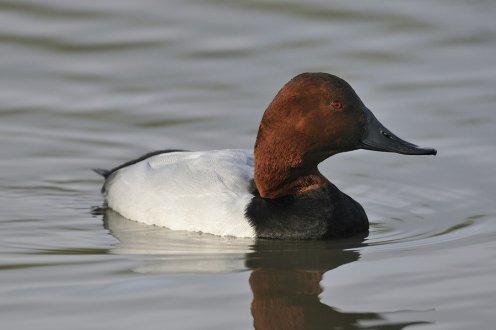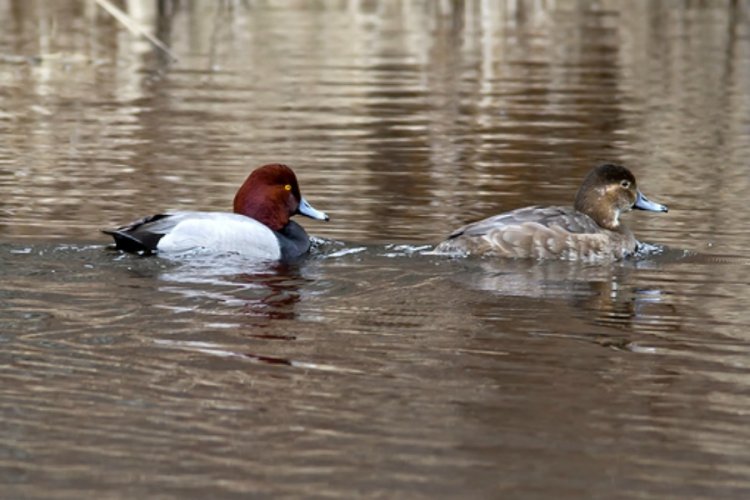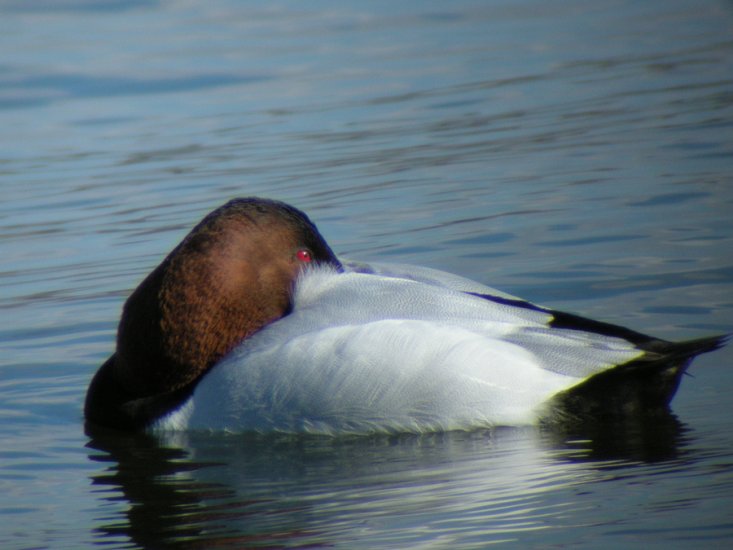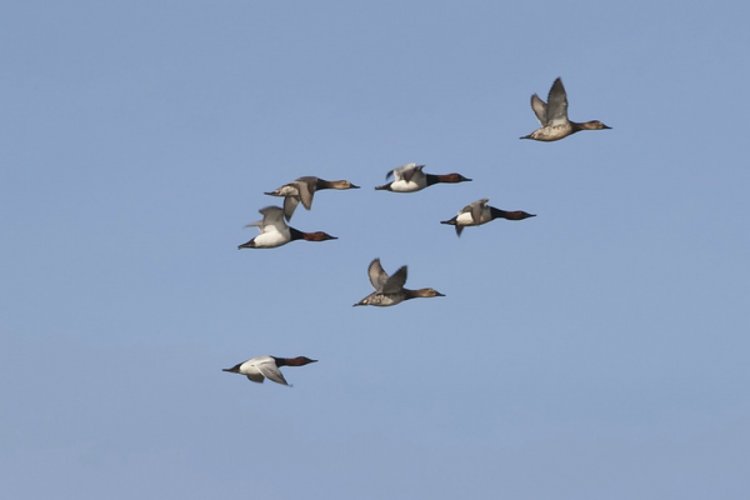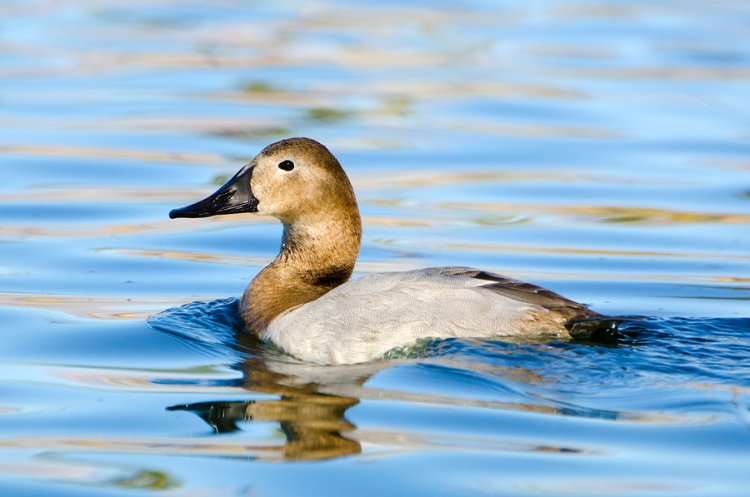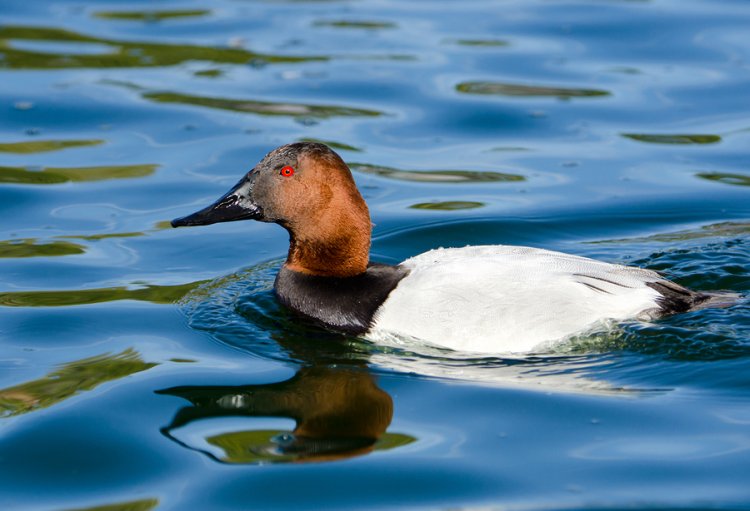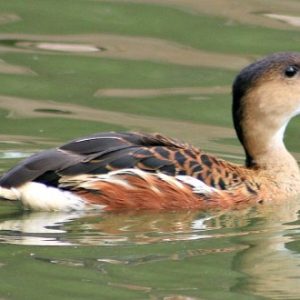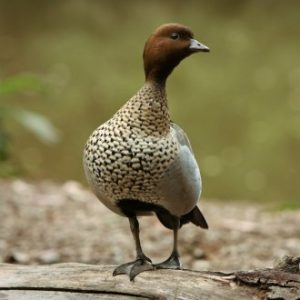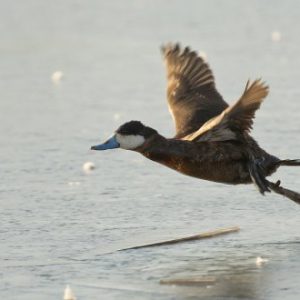Canvasback Ducks
Aythya valisineria
The Canvasback Duck is one of the largest North American ducks and is classified as a diving duck, as it dives for most of its food. The sloping and long bill is perfectly adapted for digging aquatic roots, which are a main part of this duck’s native diet. These are strong and elegant-looking ducks.
During the breeding season, male Canvasback Ducks have richly colored rust red heads, black necks and chests, and white textured wings, from which the name Canvasback came. They have red eyes, black bills, and grayish blue legs and feet. Females have a lighter, chestnut brown head, are lighter in color overall, and have more mottling throughout their feathering. Males are slightly larger than females.
Range: The winter range of the Canvasback Duck is from the Northern Midwestern states up through Western Canada and into Alaska. The summer breeding grounds are usually on the West Coast, in the Southern United States, and into Mexico.
Habitat: Their winter habitat is mainly brackish waters near the coasts. In the summer breeding season, they move to flooded prairie areas and marshes.
Status in the Wild: Once a common site while wintering in the Chesapeake Bay area, these ducks went into a serious decline in the 1980s, mainly due to the destruction of their main winter food source which is submerged aquatic vegetation. They also have suffered the loss of nesting habitat. Efforts are being made by conservationists, and the ducks themselves have been adapting to survive. Although their original numbers have not returned, Canvasback Ducks have proved highly resilient and have helped re-stabilize their population by making Baltic clams a major part of their diet. They are still in serious need of watching and conservation.
Status in Aviculture: Canvasback Ducks are not common in aviculture, but they do well in captivity. They also can be part of an avian collection as they get along fine with other duck species. They can be a bit shy and wary, but once they get comfortable with people, they adapt and do well.
Breeding: The breeding of Canvasback Ducks can be tricky in captivity. They can be fertile in their first year, but they usually do not breed until 2 or 3 years of age. Breeding season starts in the spring, and nests are constructed on the ground using natural vegetation as cover. The clutch usually consists of 6-8 light olive-colored eggs, which are incubated by the female for 23-29 days. Ducklings are successfully reared by the female and are relatively simple to raise.
Lifespan: These are long-lived ducks, and can reach ages over 20 years old with good husbandry.
Size: These are some of the heaviest and largest of North American ducks. Their length is 18-22 inches, and they weigh between 2 and 3.5 lbs. The wingspan is 31-35 inches.
Housing Requirements: Canvasback Ducks require space and a water source. For breeding and nesting, they will need some natural brush and vegetative hiding places. They don’t like to use laying or nest boxes. Their enclosure must be made safe from predators. And it should be covered to keep the ducks from flying away.
Diet: A quality duck diet combined with access to greens and other variations in diet would make a solid feeding plan.
Miscellaneous Notes: The Latin name, Aythya valisineria, of these ducks, is derived from their main food source, wild American celery or Vallisneria Americana. The underwater tubers of the wild celery plant are harvested by diving, and the duck’s bill shape is designed to effectively uproot the plants. Sadly these aquatic plants have been in sharp decline, but the ducks have adapted to eating a wider range of plants and animal matter.

